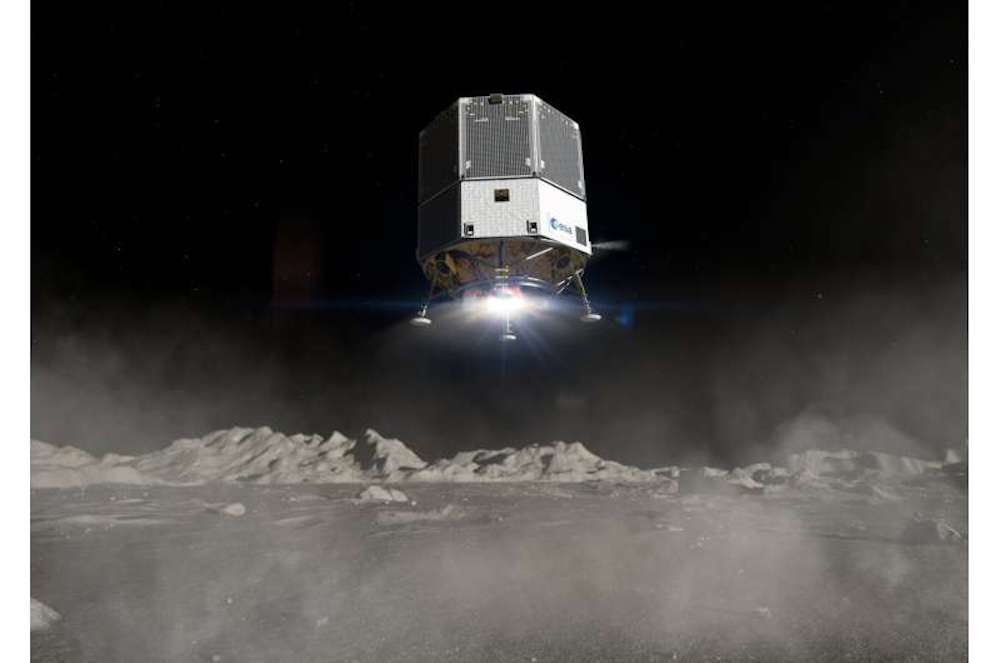Create a free profile to get unlimited access to exclusive videos, sweepstakes, and more!
ESA’s oxygen extractor will zap breathable air out of Moon rocks
You can't get blood from a stone, but air...

Putting boots on the Moon again is one thing. Establishing a presence on the Moon is something else — and we’re going to need oxygen to do that.
Wearing oxygen tanks isn’t going to be enough for astronauts who plan to go lunar for a while. For surviving weeks and possibly months on a sun-blasted, asteroid-smashed alien rock with nearly no atmosphere, there needs to be a way to extract oxygen right there. Loading huge tanks of it on a rocket would mean an extremely heavy and expensive payload, not to mention the chance that how long it could last could be underestimated. And when it’s gone, it’s gone.
But what if we could send a portable oxygen extractor to he Moon instead? There are large amounts of oxygen trapped in lunar ice and regolith. ESA has now joined forces with Thales Alenia Space, the company they believe is most capable of designing an oxygen extractor that is actually viable. It will tag along with the European Large Logistic Lander, which will be incorporated into NASA’s Artemis program to deliver supplies, possibly robots, and even rovers over there.
“The payload uses an electric current to extract oxygen from regolith, and some elements need to be heated as well,” David Binns, Systems Engineer for ESA’s Concurrent Design Facility (CDF), told SYFY WIRE. “Being able to make oxygen to breathe and use for rocket fuel, will save the cost of launching them from Earth.”
Thales Alenia, which led a group with members also from AVS, Metalysis, Open University, and Redwire Europe, was the winner of an ESA competition that sought a next-gen design concept for an oxygen extractor prototype. They will need to create something that can extract 70% of the oxygen from a rock sample. Lunar regolith looks more like dusty soil pre-extraction, but after it loses most of its oxygen, it is a shimmering pile of crushed metal alloys. Not that the metal is junk metal. There will still be many uses for it on the Moon when humans get there.
The solar-powered extractor will also have to prove that it can measure gas concentrations as well it extracts oxygen. Lunar regolith is 40-35% oxygen. That oxygen exists as oxides in minerals and glass found within the grayish dust. Any other usable materials, like the metal alloys in Moon dust, will also be extracted. This thing also has to be fast, because it will only have 10 days to do this while it’s still daytime on the Moon, and there is enough sunlight to fuel it. Forget the 24-hour days on Earth. A lunar day is about two weeks. Lunar nights are brutal.
ESA has given Thales Alenia its requirements so they can bring a prototype to life from their concept. There will also be ESA scientists collaborating with the Thales-fronted group. The most efficient way to pull oxygen from lunar dust is a method known as molten salt electrolysis, something that was also proven in an ESA lab. Regolith is powdered and combined with an electrolyte, specifically calcium chloride salt, and heated to 1742 degrees Fahrenheit (seems extreme but the particles stay solid). Oxygen is freed when this is zapped with an electrical current. That oxygen can then be collected at a positively charged electrode, or anode.
A major advantage of molten salt electrolysis is that does not require the regolith to be melted like some other methods. It also extracts a higher amount of oxygen than any other type of extraction. In previous experiments, 75% of the trapped oxygen was extracted in 15 hours. This is a positive outlook for a machine that will have a limited time to gather as much oxygen as possible before it’s lights out on the Moon. Could this tech eventually be turned into an entire oxygen planet, and even used on Mars? Binns thinks it could be possible.
“Most of our knowledge is from Moon-like materials so far, but we believe a scaled up concept could be used on Mars and asteroids,” he said. “The prototype will help us learn how to build larger."


























